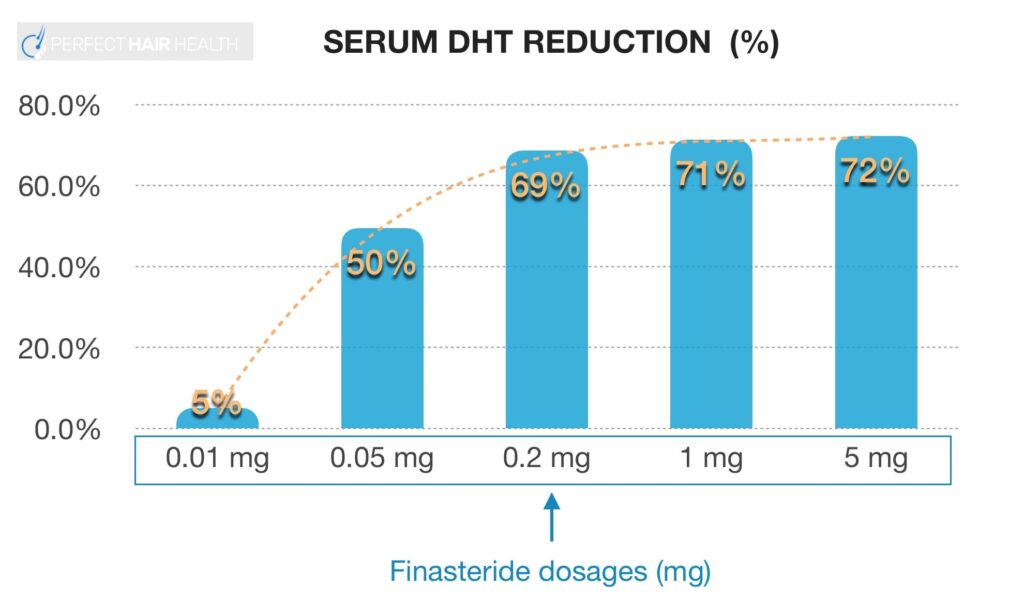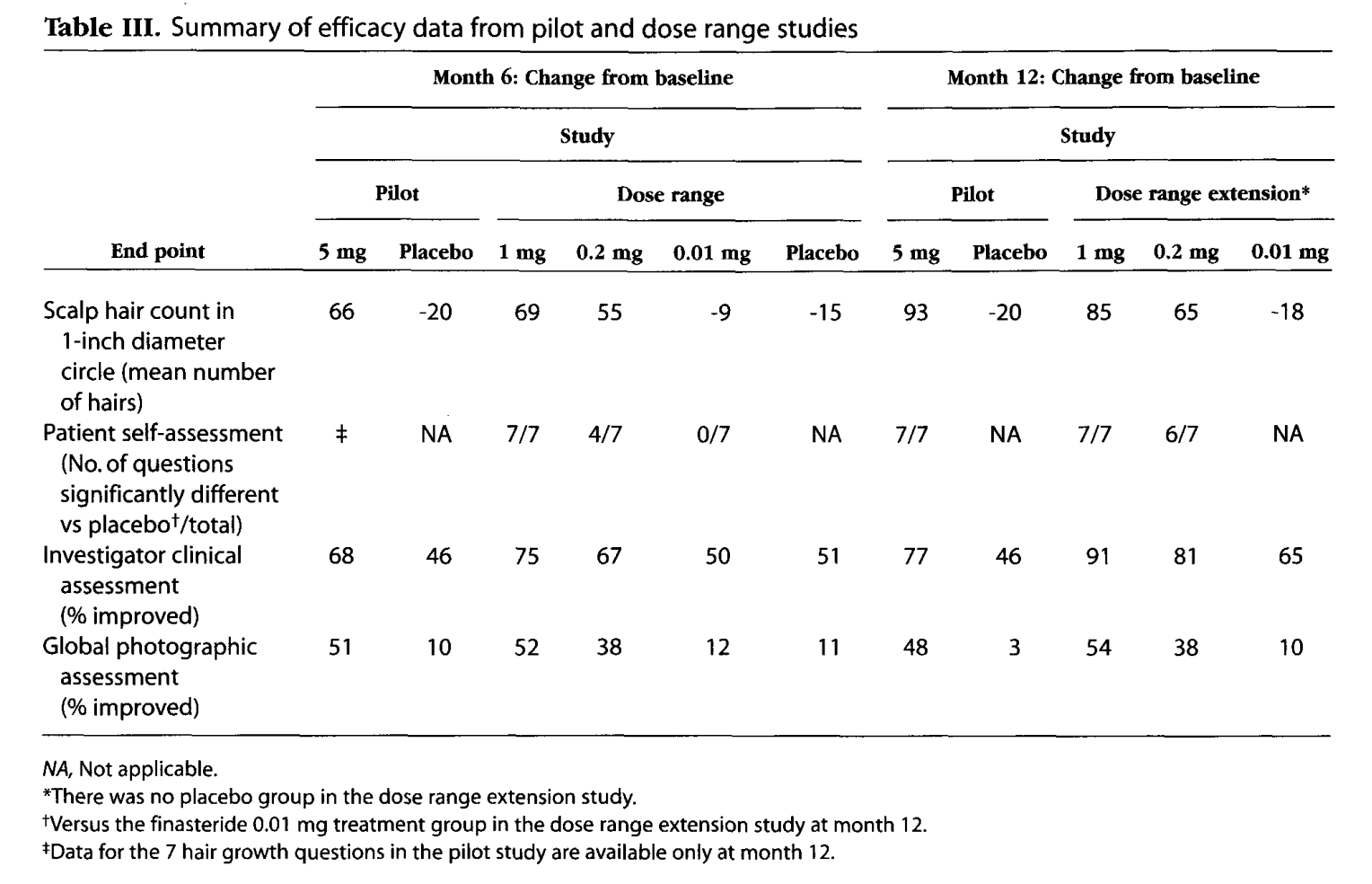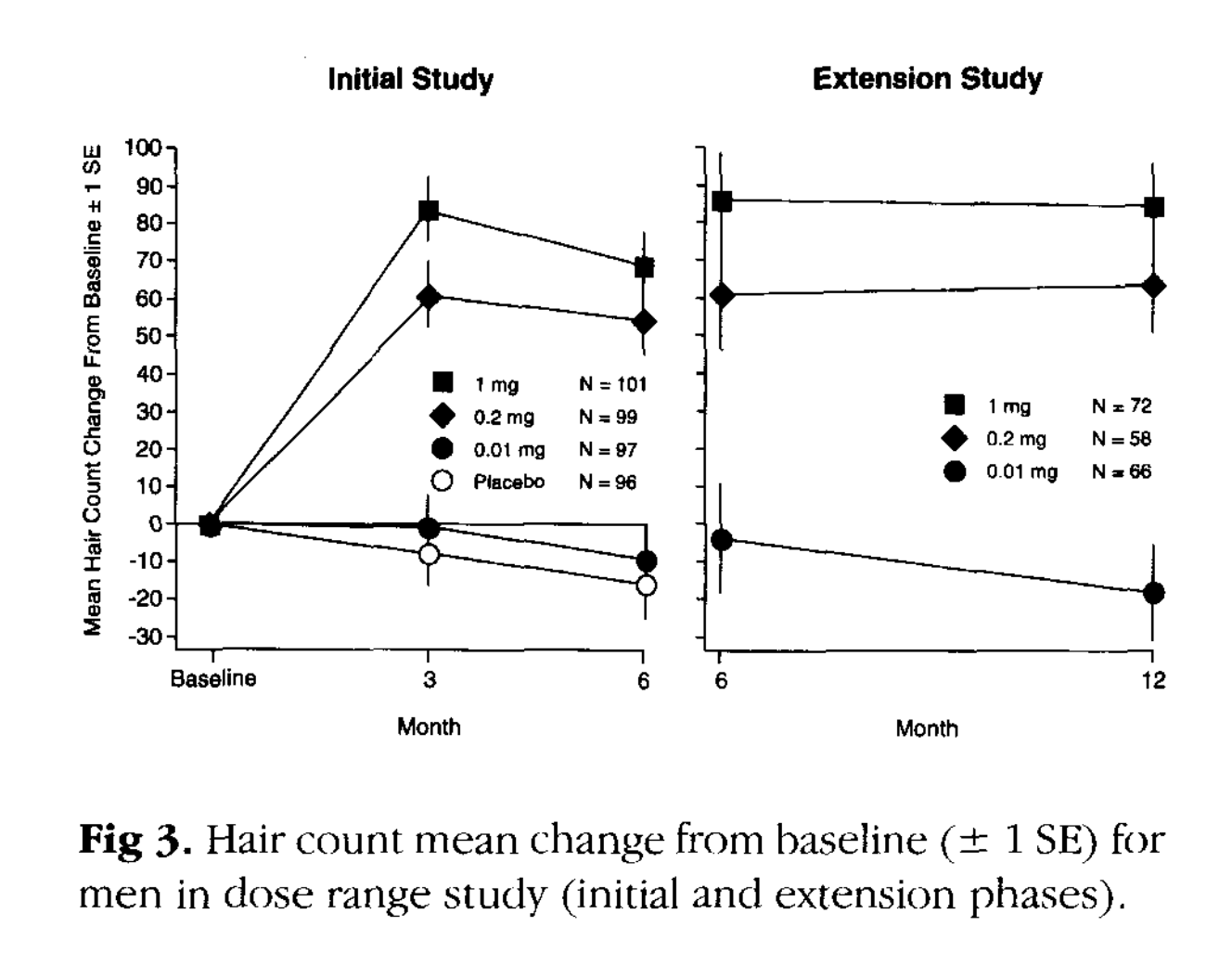- About
- Mission Statement
Education. Evidence. Regrowth.
- Education.
Prioritize knowledge. Make better choices.
- Evidence.
Sort good studies from the bad.
- Regrowth.
Get bigger hair gains.
Team MembersPhD's, resarchers, & consumer advocates.
- Rob English
Founder, researcher, & consumer advocate
- Research Team
Our team of PhD’s, researchers, & more
Editorial PolicyDiscover how we conduct our research.
ContactHave questions? Contact us.
Before-Afters- Transformation Photos
Our library of before-after photos.
- — Jenna, 31, U.S.A.
I have attached my before and afters of my progress since joining this group...
- — Tom, 30, U.K.
I’m convinced I’ve recovered to probably the hairline I had 3 years ago. Super stoked…
- — Rabih, 30’s, U.S.A.
My friends actually told me, “Your hairline improved. Your hair looks thicker...
- — RDB, 35, New York, U.S.A.
I also feel my hair has a different texture to it now…
- — Aayush, 20’s, Boston, MA
Firstly thank you for your work in this field. I am immensely grateful that...
- — Ben M., U.S.A
I just wanted to thank you for all your research, for introducing me to this method...
- — Raul, 50, Spain
To be honest I am having fun with all this and I still don’t know how much...
- — Lisa, 52, U.S.
I see a massive amount of regrowth that is all less than about 8 cm long...
Client Testimonials150+ member experiences.
Scroll Down
Popular Treatments- Treatments
Popular treatments. But do they work?
- Finasteride
- Oral
- Topical
- Dutasteride
- Oral
- Topical
- Mesotherapy
- Minoxidil
- Oral
- Topical
- Ketoconazole
- Shampoo
- Topical
- Low-Level Laser Therapy
- Therapy
- Microneedling
- Therapy
- Platelet-Rich Plasma Therapy (PRP)
- Therapy
- Scalp Massages
- Therapy
More
IngredientsTop-selling ingredients, quantified.
- Saw Palmetto
- Redensyl
- Melatonin
- Caffeine
- Biotin
- Rosemary Oil
- Lilac Stem Cells
- Hydrolyzed Wheat Protein
- Sodium Lauryl Sulfate
More
ProductsThe truth about hair loss "best sellers".
- Minoxidil Tablets
Xyon Health
- Finasteride
Strut Health
- Hair Growth Supplements
Happy Head
- REVITA Tablets for Hair Growth Support
DS Laboratories
- FoliGROWTH Ultimate Hair Neutraceutical
Advanced Trichology
- Enhance Hair Density Serum
Fully Vital
- Topical Finasteride and Minoxidil
Xyon Health
- HairOmega Foaming Hair Growth Serum
DrFormulas
- Bio-Cleansing Shampoo
Revivogen MD
more
Key MetricsStandardized rubrics to evaluate all treatments.
- Evidence Quality
Is this treatment well studied?
- Regrowth Potential
How much regrowth can you expect?
- Long-Term Viability
Is this treatment safe & sustainable?
Free Research- Free Resources
Apps, tools, guides, freebies, & more.
- Free CalculatorTopical Finasteride Calculator
- Free Interactive GuideInteractive Guide: What Causes Hair Loss?
- Free ResourceFree Guide: Standardized Scalp Massages
- Free Course7-Day Hair Loss Email Course
- Free DatabaseIngredients Database
- Free Interactive GuideInteractive Guide: Hair Loss Disorders
- Free DatabaseTreatment Guides
- Free Lab TestsProduct Lab Tests: Purity & Potency
- Free Video & Write-upEvidence Quality Masterclass
- Free Interactive GuideDermatology Appointment Guide
More
Articles100+ free articles.
-
Oral Minoxidil – Ultimate Guide
-
Introducing Ulo: The Future of Hair Loss Telemedicine
-
OS-01 Hair Review: Does It Live Up to the Hype?
-
Stretching The Truth: 3 Misrepresented Claims From Hair Loss Studies
-
Minoxidil Shedding – What to Expect & When it Stops
-
Does Minoxidil Cause Skin Aging?
-
Thermus Thermophilus Extract Does Not Increase Hair Density By 96.88%, Despite Dermatology Times’ Claims.
-
Does Retinoic Acid (Tretinoin) Improve Hair Growth From Minoxidil?
PublicationsOur team’s peer-reviewed studies.
- Microneedling and Its Use in Hair Loss Disorders: A Systematic Review
- Use of Botulinum Toxin for Androgenic Alopecia: A Systematic Review
- Conflicting Reports Regarding the Histopathological Features of Androgenic Alopecia
- Self-Assessments of Standardized Scalp Massages for Androgenic Alopecia: Survey Results
- A Hypothetical Pathogenesis Model For Androgenic Alopecia:Clarifying The Dihydrotestosterone Paradox And Rate-Limiting Recovery Factors
Menu- AboutAbout
- Mission Statement
Education. Evidence. Regrowth.
- Team Members
PhD's, resarchers, & consumer advocates.
- Editorial Policy
Discover how we conduct our research.
- Contact
Have questions? Contact us.
- Before-Afters
Before-Afters- Transformation Photos
Our library of before-after photos.
- Client Testimonials
Read the experiences of members
Before-Afters/ Client Testimonials- Popular Treatments
-
ArticlesHow Often Do I Need To Take Oral Finasteride?
First Published Feb 22 2023Last Updated Oct 29 2024PharmaceuticalResearched & Written By:Perfect Hair Health TeamReviewed By:Rob English, Medical EditorWant help with your hair regrowth journey?
Get personalized support, product recommendations, video calls, and more from our researchers, trichologists, and PhD's dedicated to getting you the best possible outcomes.
Learn MoreArticle Summary
Oral finasteride is prescribed at 1 mg daily to treat androgenic alopecia (AGA). However, clinical studies suggest that doses as low as 0.2 mg daily can reduce levels of dihydrotestosterone (DHT) nearly the same as 1.0 mg daily doses, and improve hair counts similarly to 1 mg daily. But do these lower finasteride doses also come with a lower risk of side effects? And if so, can we do alternate dosing schedules – like alternate-day, alternate-week, or alternate-month doses – and still achieve hair gains? This article explores the science and provides alternate dosing options for anyone interested in lowering their drug exposure.
Full Article
Oral finasteride is a drug that helps lower levels of dihydrotestosterone (DHT) – the hormone causally associated with androgenic alopecia (AGA). Since 1997, the FDA has approved oral finasteride at 1 mg daily doses to treat AGA.[1]https://www.ncbi.nlm.nih.gov/books/NBK513329/
Having said that, clinical studies also suggest that daily doses of finasteride as low as 0.2 mg can reduce nearly as much DHT as 1.0 mg daily, and lead to similar hair count improvements.[2]europepmc.org/article/med/15319158
For these reasons, many finasteride users have wondered why physicians routinely prescribe 1 mg pills when they can potentially reap the same hair gains with 0.2 mg, or 1/5th the total drug exposure.
In this article, we’ll explore the science behind finasteride’s dosing, and if alternate dosing schedules make sense.
What’s the Ideal Oral Finasteride Dosage For Hair Growth?
In pharmaceutical settings, ideal doses are determined based on the perfect intersection whereby a drug maximizes benefit while minimizing side effects. For finasteride, that would be the dose that maximizes DHT reduction (and thereby hair regrowth) while minimizing the risk of adverse events.
To determine what this dose is, investigators must conduct a range of dosing studies on finasteride for the treatment of AGA – and then measure hair parameter outcomes against any perceived side effects.
Luckily for us, these studies have already been conducted.
Finasteride’s dose-dependent effects on serum DHT
Finasteride is a drug that lowers levels of the hormone DHT – which is causally linked to the balding process in men and women with androgenic alopecia.
A 1999 study sought to determine the effects of finasteride on DHT levels in the blood and scalp, depending on the dose someone took: 0.01 mg, 0.2 mg, 0.05 mg, 1.0 mg, or 5.0 mg.[3]https://pubmed.ncbi.nlm.nih.gov/10495374/
The investigators found that finasteride had what’s known as a logarithmic, dose-dependent effect on DHT reduction. That’s just a fancy way of saying that a little finasteride had nearly the same effect on DHT as a lot of finasteride – and that with higher doses, the marginal reduction of DHT got smaller and smaller.
Serum DHT Reductions vs. Finasteride Dosages
For instance, the above chart shows that while 0.01 mg daily of finasteride barely reduces any DHT, 0.2 mg daily reduces almost as much as DHT as 5 mg daily – even though 5 mg of finasteride 25x higher than the 0.2 mg dose.
Thus, the investigators concluded:
“In this study, doses of finasteride as low as 0.2 mg per day maximally decreased both scalp skin and serum DHT levels. These data support the rationale used to conduct clinical trials in men with male pattern hair loss at doses of finasteride between 0.2 and 5 mg.”
Interestingly, finasteride’s phase III clinical trials (which granted the drug FDA approval) tested a dose of 1 mg daily – and with impressive results on hair count parameters and a relatively low rate of reported side effects versus placebo.[4]https://pubmed.ncbi.nlm.nih.gov/9777765/
But what about lower daily doses of finasteride? Might those also work to regrow hair – all while reducing drug exposure and perhaps side effects?
According to small clinical studies, yes – albeit with caveats.
Finasteride: dose-dependent effects on hair counts & side events
While the evidence is limited, there have been a handful of small clinical trials comparing different daily doses of finasteride on hair counts (and side effects) in men with androgenic alopecia.
One study tested daily doses of finasteride at 0.01 mg, 0.2 mg, 1.0 mg, and 5.0 mg versus placebo for 1-2 years. The researchers found that doses at or above 0.2 mg daily were effective at regrowing hair versus placebo, but that doses of 1.0 mg to 5.0 mg were directionally superior versus 0.2 mg doses.[5]https://pubmed.ncbi.nlm.nih.gov/10495375/
Just see this chart for a breakdown of the numbers:
Roberts JL, Fiedler V, Imperato-McGinley J, Whiting D, Olsen E, Shupack J, Stough D, DeVillez R, Rietschel R, Savin R, Bergfeld W, Swinehart J, Funicella T, Hordinsky M, Lowe N, Katz I, Lucky A, Drake L, Price VH, Weiss D, Whitmore E, Millikan L, Muller S, Gencheff C, et al. Clinical dose ranging studies with finasteride, a type 2 5alpha-reductase inhibitor, in men with male pattern hair loss. J Am Acad Dermatol. 1999 Oct;41(4):555-63. PMID: 10495375.
Moreover, here’s a chart visualizing the differences in hair counts across the full two years:
Roberts JL, Fiedler V, Imperato-McGinley J, Whiting D, Olsen E, Shupack J, Stough D, DeVillez R, Rietschel R, Savin R, Bergfeld W, Swinehart J, Funicella T, Hordinsky M, Lowe N, Katz I, Lucky A, Drake L, Price VH, Weiss D, Whitmore E, Millikan L, Muller S, Gencheff C, et al. Clinical dose ranging studies with finasteride, a type 2 5alpha-reductase inhibitor, in men with male pattern hair loss. J Am Acad Dermatol. 1999 Oct;41(4):555-63. PMID: 10495375.
So, what about adverse events? That same study concluded:
“The incidence of these side effects with finasteride therapy was generally comparable to that observed with treatment with placebo, and there was no evidence of dose dependency or increased incidence with longer therapy out to 12 months. In addition, these side effects ceased in some patients while they continued to receive finasteride.”
In other words, the authors of the study found that while 1mg daily doses of finasteride produced directionally better – but not statistically significantly better – hair count improvements, these improvements did not come at the expense of a higher rate of side effects.
Thus, the investigators concluded that 1mg daily of finasteride was probably the best dose for treating androgenic alopecia.
Having said that, other studies haven’t shared the exact same conclusions.
For instance, a 2004 study on 414 Japanese men found that 1.0 mg daily doses of finasteride produced “numerically superior” results versus 0.2 mg daily, but that 1.0 mg daily doses also came with a numerically superior risk of side effects.[6]https://www.researchgate.net/publication/8392775_Finasteride_in_the_treatment_of_Japanese_men_with_male_pattern_hair_loss
Similar to the other finasteride dosing study, none of the differences in hair count changes or side effect incidences were statistically significant. Nonetheless, the investigators felt the differences in results were still strong enough to note in the conclusions of their study.
Summary (so far)
Based on the totality of data currently available, this leads us to believe the following:
- DHT reduction. Finasteride daily doses of 0.2 mg, 1.0 mg, and 5.0 mg all reduce nearly the same amount of DHT in the body.
- Hair counts. Compared to 0.2 mg doses, 1.0 mg and 5.0 mg doses of finasteride result in directionally better hair counts over 1-2 years.
- Side effects. Compared to 0.2 mg doses, 1.0 mg and 5.0 mg may also come with a directionally higher risk (or magnitude) of side effects.
So, if we choose to lean into these directional (but not statistically significant) results and believe that lower doses of finasteride come with a lower risk of side effects, the next question becomes: “How infrequently can I use finasteride and still see hair gains?”
Can I Use Finasteride Less Than Once Daily?
The answer depends on a number of factors, including finasteride’s:
- Terminal half-life (i.e., how long it takes for 50% of the drug to become inactivated)
- Tissue dissociation timing (i.e., how long it takes for finasteride to leave skin tissues)
- Biological half-life (i.e., how long it takes for finasteride’s effect on DHT to get cut in half)
We’ve covered these topics in great detail inside the following articles. For more information, please read:
For now, here are the key takeaways from the literature:
- Finasteride has a terminal half-life of 5-7 hours.
- After multiple daily doses, finasteride reaches a tissue dissociation timing of 4-5 days.
- Due to both of the above, finasteride’s effects on DHT suppression can remain for up to 14-30 days after quitting the drug.
On that note, one dosing study on finasteride found that after a year of daily use, every-other-month dosing of 1 mg daily of finasteride was just as effect as once-daily dosing – despite users in the first group using the drug for a total of 6 versus 12 months throughout the same year.[7]https://jaad.org/retrieve/pii/S0190962220319289
Again, this is because finasteride’s effects don’t immediately dissipate upon cessation of the drug. They can last up to 14-30 days from the last dose – at least after reaching a certain saturation point in the body (which often requires a handful of days of use at 1 mg daily).
With all of this in mind, finasteride users who are interested in (1) achieving some hair gains, and (2) minimizing their drug exposure – all in hopes of lowering their risk of side effects – may be able to achieve this by reducing their dosing schedule of finasteride.
Alternate Dosing Schedules For Finasteride
To best conceptualize this, it’s easier to think of finasteride dosing in terms of weekly exposure levels, rather than daily. This is because finasteride’s effects on DHT can accumulate across doses, and because lower doses tend to have a similar impact on DHT as higher doses (up to a point).
For instance, those studies showing statistically equivalent efficacy of 0.2 mg versus 1.0 mg daily of finasteride represented dosing difference of 1.4 mg versus 7.0 mg weekly of finasteride.
So, how can we take into account finasteride’s biological half-life to build an alternate dosing schedule that might help support hair growth, albeit with a lower overall drug exposure?
We can likely do so by trying a finasteride dosing schedule of 0.5 mg, 3x weekly.
For most people, that would involve taking 0.5 mg of finasteride every Monday, Wednesday, and Friday. That’s ~1.5 mg weekly of exposure, which is roughly the same as 0.2 mg daily (or 1.4 mg weekly).
In that regard, you can achieve this by simply getting a standard prescription of finasteride for 1.0 mg daily. Companies like Hims, Keeps, and Roman (no affiliation!) often offer these bundled in 90-day supply.
Then, you can cancel that subscription product, buy a pill cutter, and just cut the pills in half.
You can take one-half pill every Monday, Wednesday, and Friday – which equates to 1.5 pills weekly.
If you received a 90-day supply of 1.0 mg daily of finasteride from any of these companies, this alternate dosing schedule should last you a total of 60 weeks – which is more than a year.
With this alternate dosing schedule, you also reduce your total costs of finasteride treatment to just a few dollars per month. So for those who are financially constrained, it’s potentially a wonderful option.
Whether or not these lower doses actually worsen hair count outcomes or lower side effect risks is still up for debate. Nonetheless, this reduced dosing schedule should – at a minimum – lower your overall drug exposure. For this reason, this alternate dosing schedule is also included as part of our guide on troubleshooting finasteride-related side effects.
We hope this article helps. If you’re looking for personal support on hair growth journey, you can receive personalized support and work with our team of researchers directly inside our membership community.
References[+]
References ↑1 https://www.ncbi.nlm.nih.gov/books/NBK513329/ ↑2 europepmc.org/article/med/15319158 ↑3 https://pubmed.ncbi.nlm.nih.gov/10495374/ ↑4 https://pubmed.ncbi.nlm.nih.gov/9777765/ ↑5 https://pubmed.ncbi.nlm.nih.gov/10495375/ ↑6 https://www.researchgate.net/publication/8392775_Finasteride_in_the_treatment_of_Japanese_men_with_male_pattern_hair_loss ↑7 https://jaad.org/retrieve/pii/S0190962220319289 Want help with your hair regrowth journey?
Get personalized support, product recommendations, video calls, and more from our researchers, trichologists, and PhD's dedicated to getting you the best possible outcomes.
Learn MorePerfect Hair Health Team
"... Can’t thank @Rob (PHH) and @sanderson17 enough for allowing me to understand a bit what was going on with me and why all these [things were] happening ... "
— RDB, 35, New York, U.S.A."... There is a lot improvement that I am seeing and my scalp feel alive nowadays... Thanks everyone. "
— Aayush, 20’s, Boston, MA"... I can say that my hair volume/thickness is about 30% more than it was when I first started."
— Douglas, 50’s, Montréal, CanadaWant help with your hair regrowth journey?
Get personalized support, product recommendations, video calls, and more from our researchers, trichologists, and PhD's dedicated to getting you the best possible outcomes.
Join Now - Mission Statement
 Scroll Down
Scroll Down










